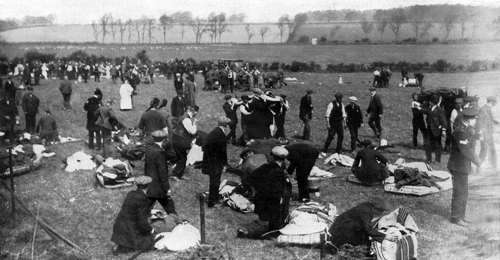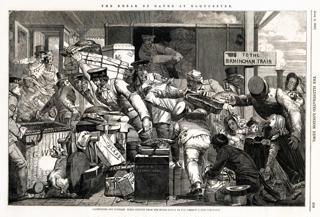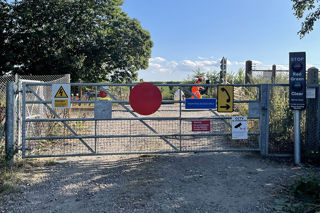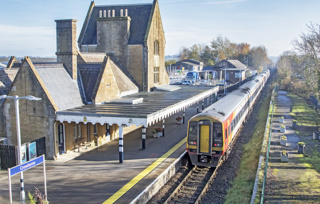One hundred years ago, the worst rail disaster in British history claimed more than 200 lives within a matter of minutes.
In the spring of 1915, the Allied Mediterranean Expeditionary Force had suffered tens of thousands of casualties as it attempted to destroy Ottoman positions after landing at Gallipoli.
On May 22, a special troop train of 21 carriages left Larbert in Stirlingshire, with 498 officers and men of the 1/7th battalion the Royal Scots and the 8th battalion the Highland Light Infantry on board. The men were bound for Liverpool and thence to Gallipoli, to reinforce the losses after a series of failed attacks.
Tragically, of those on board, 216 would never get further south than Dumfriesshire.
At 0630, a slow train from Carlisle arrived on the Down Main and was held at Quintinshill box. The signalman on duty, signalman George Meakin, shunted the train onto the Up Main to allow a later Down express to pass. A train of coal wagons was already parked in the Down loop.
His relief, signalman James Tinsley, jumped off the locomotive to start his day’s work. Meakin briefed Tinsley on the situation, and took his colleague’s arrival as an opportunity to read a newspaper.
As Tinsley went about sorting out his train register, and setting signals and block instruments, the southbound troop train slammed into the parked slow service, propelling it back several yards. The troop train telescoped, and its wooden carriage bodies splintered.
The men in the box reacted with horror, as there was a Down express already heading into their section. Meakin said: “Oh Jimmy, what have you done?” as Tinsley answered a call from the next box down.
“We’ve had a smash up here” was his response to the signalman, before hanging up.
The guard of the troop special and the slow train’s crew tried to flag down the express train. Its driver saw them a few hundred yards from the wreckage, and applied his brakes. But less than a minute later, it ‘clipped’ the troop train, derailing several of its own carriages and tragically running over several soldiers who had escaped the first crash.
Gas used for lighting the trains began to burn ferociously. The driver of the express was buried up to his neck in coal and had to be dug out. The coal train was moved as far away as possible to avoid further conflagrations.
The troops who had managed to get clear from the wreckage worked furiously with tools from the trains to rescue their trapped comrades and other passengers. Local fields were turned into makeshift casualty stations, with survivors and farm workers tending to wounded passengers. The sun was shining, and it was a warm summer’s day. One Royal Scotsman commented in Carlisle hospital later that “we could not have had a better day for it”.
The Caledonian Railway (operator of the troop train and the passenger train, and the employer of the two Quintinshill signalmen) was made aware of the crash as quickly as possible, and by 0714 the railway authorities at Carlisle knew something terrible had happened.
The fire brigade arrived from Carlisle at about 1100 to find dozens of carriages and coal wagons ablaze. Their hoses were useless, and the tenders of the locomotives were either too damaged or too far away to be of use.
The fire cremated dozens of those on board, and made identification of some of the victims impossible - remember this is before detailed dental records and modern forensic examination. Grimly vague identification reveals the extent of the damage to some of the bodies - for example, “three trunks, probably children”.
Many of the surviving troops were sent straight back to Scotland by ambulance train, organised by the Caledonian Railway at Carlisle. The remainder were taken to Carlisle for treatment, but of those, one officer and 55 men were later declared unfit for service and sent back to Edinburgh.
Eventually, only seven officers and 57 men of 7RS were sent on towards Liverpool. Before embarkation, however, all the non-commissioned officers and men were declared unfit, and only the officers embarked for Gallipoli.
Back in Scotland, the funeral for the dead in Leith was attended by 3,150 soldiers. The men were buried in a mass grave at Rosebank Cemetery, Edinburgh, at a private service attended only by their comrades. It lasted three hours.
Today, many who work on the railway will have gone through a training session on the basic technicalities of block signalling. They will also have learned that not operating block equipment and observing procedures can result in terrible accidents.
The inquest found that this was what had happened at Quintinshill. The blame was laid at the feet of the two signalmen, Meakin and Tinsley, and the two men were found guilty of culpable manslaughter after they gave evidence of dereliction of duty.
Their shift pattern had been unofficially tweaked to avoid “getting up so early” for the 6am shift. Tinsley had started arriving at 0630, instead of 0600. For some time, Meakin had been writing down train times up to 0630 in pencil in the signal box’s register book. This meant that instead of keeping track of the trains passing his section and carrying out his duties as normal, Tinsley started his shift by frantically scribbling away at the register, copying down the times of trains that had already gone through.
The inquest found that Tinsley failed to observe that the slow train was still parked on the Up Main, and incorrectly gave the ‘Line Clear’ signal for the troop train to enter his section. The fact that he had “leaped off the engine” of that very train less than 30 minutes previously, followed by its fireman, makes his forgetting it seem unlikely. Nonetheless, it is possible, considering the fireman did not ensure Rule 55 had been followed, and left the box prior to the collision.
Rule 55 required train crews to ask the signalman why they were stopped, and what the situation was. Meakin also failed to place a collar on the lever of the signal that allowed the troop train into the section. Such a collar prevents signals being changed, as Tinsley did, when they ought not to be. Had Meakin applied this rule, the troop train would have been slowed (if not completely stopped) at the edge of his section. The ensuing panic meant the Down express had clear signals through Quintinshill, when it should have had danger signals presented as soon as the accident happened.
Sadly, very little improved as a result of the accident. Track circuitry was already being introduced in Britain, Rule 55 was already in place, and lever collars were standard practice in signal boxes. The two signalmen were re-employed on the railway before the end of the war.
Theories abound about German bribery, Tinsley suffering an epileptic fit on the morning he was on duty, and the crew of the slow train staying and distracting him. But despite a century of argument, it is unlikely that the whole truth behind Britain’s worst railway disaster will ever be learned.
- This feature was published in RAIL 776 on June 10 2015


















Login to comment
Comments
No comments have been made yet.